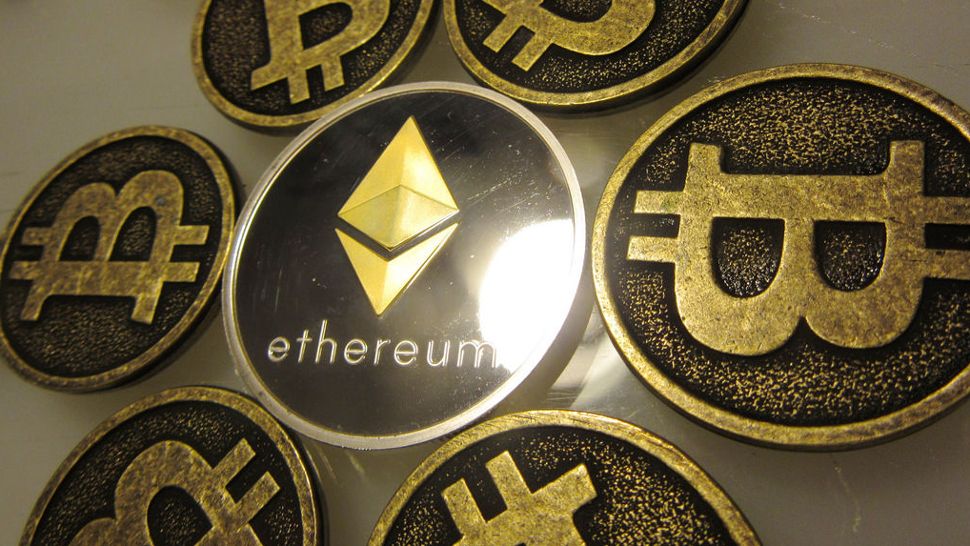
Bitcoin may be the widely acknowledged as the king cryptocurrencies, but there’s a new kid on the block that’s proving to be an irresistible prospect on the market.
Ethereum may have only entered the public consciousness back in 2015, but its decentralised Blockchain capabilities have made it something of an overnight success that saw it trading at around $1,400 by the start of 2018.
So how did Ethereum become a crypto-based success story, and what makes it so popular? We thought we’d take a moment to look at the rise and rise of the cryptocurrency.
The Ethereum origin story
Vitalik Buterin, a programmer from Toronto, became interested in Bitcoin and its capabilities around the start of the decade before dreaming up his own version of a cryptocurrency with near-limitless potential.
By 2013, Buterin’s vision was refined into a white paper. His intention was to create an alternative platform for any type of application that developers would want to build.
Ethereum was set to surpass the sort of financial use cases made possible by Bitcoin, making it easy to create smart contracts and self-enforcing code that developers can tap for a range of applications.
The excitement surrounding Buterin’s white paper was palpable, and to get the project off the ground, a crowdfunding campaign was set up in 2014 – where interested parties were invited to buy Ethereum tokens, or Ether, which acted as shares in the project.
The crowdfunder went on to become the most successful campaign of its kind at the time – raising over $18 million. One year later, Ethereum’s first live release, Frontier, was launched, offering developers the chance to create their own decentralised apps.
Ethereum’s value for blockchain
Much like Bitcoin, Ethereum contains a shared record of its transaction history in a secure Blockchain – and every node on the network stores a copy of this history.
Ethereum’s biggest edge, however, is its use of ‘smart contracts.’ The beauty of smart contracts is that you can set up a transaction based on a range of different conditions being met triggering when they occur.
Because Blockchain powers smart contracts, it gives developers the ability to create applications that never go offline and cannot be edited by third parties.
Again, smart contracts provide users with much more freedom in their transactions, thanks to the ability to add criteria.
BitDegree.org note the example of buying a house as the perfect way of illustrating the power of the smart contract. Traditionally, the act of purchasing a property is dependant on multiple third-parties like lawyers and brokers, but thanks to smart contracts, the ownership of the home is confirmed as soon as a predetermined condition is met. So the transaction appears as something like ‘John transfers 200 ETH,’ and once the payment is verified, John can rightfully claim ownership of the house.
Ethereum and blockchain current applications
There are already quite a few companies that already offer investors to take ownership of real estate property by utilising the Blockchain platform in conjunction with Ethereum. Will Andrich, Co-founder and CEO of Thaler.One, said that the ultimate goal of real estate ownership through Ethereum is to “transform and democratise real estate investing”.
The potential that smart contracts hold is virtually limitless, and can apply to costly transactions from car dealerships, to real estate, to e-commerce – even freelance contracts can be drawn up that guarantees much better security for both parties.
Fundamentally, Ethereum will forever be compared to Bitcoin by observers and market commentators, but in reality, both cryptocurrencies perform much different roles.
While Bitcoin is more liquid than Ethereum with a lower, value-adding, coin supply, the potential use-cases for Ethereum is much greater – with better applications and technology.
Ethereum vs Bitcoin
Given that Ethereum is six years younger than Bitcoin, its technology is newer and capable of performing more complex tasks, and as such its Blockchain is able to work well with Ethereum’s smart contract functionality.
Another great perk of Ethereum’s superior technology is the pace of transactions with the cryptocurrency. With payments processed in seconds as opposed to minutes, the job of managing the transfer of money is much more seamless than through its crypto-competitors.
It’s important to state that despite the power of smart contracts and Ethereum’s zero-downtime applications, there is still room for occasional bouts of human error. This is due to smart contracts’ code being written by humans – leaving them open to oversights and bugs that could create adverse circumstances.
Luckily, because of the depth of the Blockchain network that Ethereum operates on, it’s relatively simple to overwrite broken code with the consent of the network’s other users, but it’s worth reiterating that it’s ill-advisable to throw caution to the wind when dealing in a cryptocurrency no matter how secure and impenetrable it is.
Despite its billing by some as an alternative to Bitcoin, Ethereum represents much more than a decentralised cryptocurrency. With cutting-edge technology and instantaneous water-tight transactions, it’s seemingly only a matter of time before the new kid on the block rises to the fore of the digital marketplace.
- My name is Dmytro, and I’m a CEO at Solvid and founder of Pridicto, a web analytics startup that uses AI and Machine Learning to forecast web traffic, monitor vital metrics and set visual traffic aims.

Be the first to comment